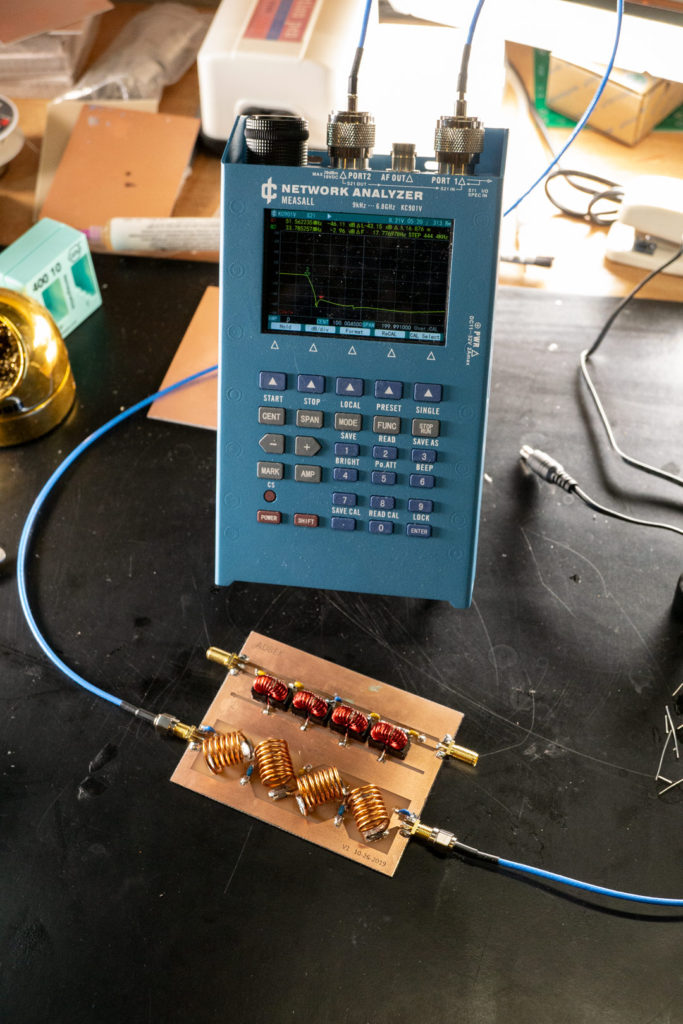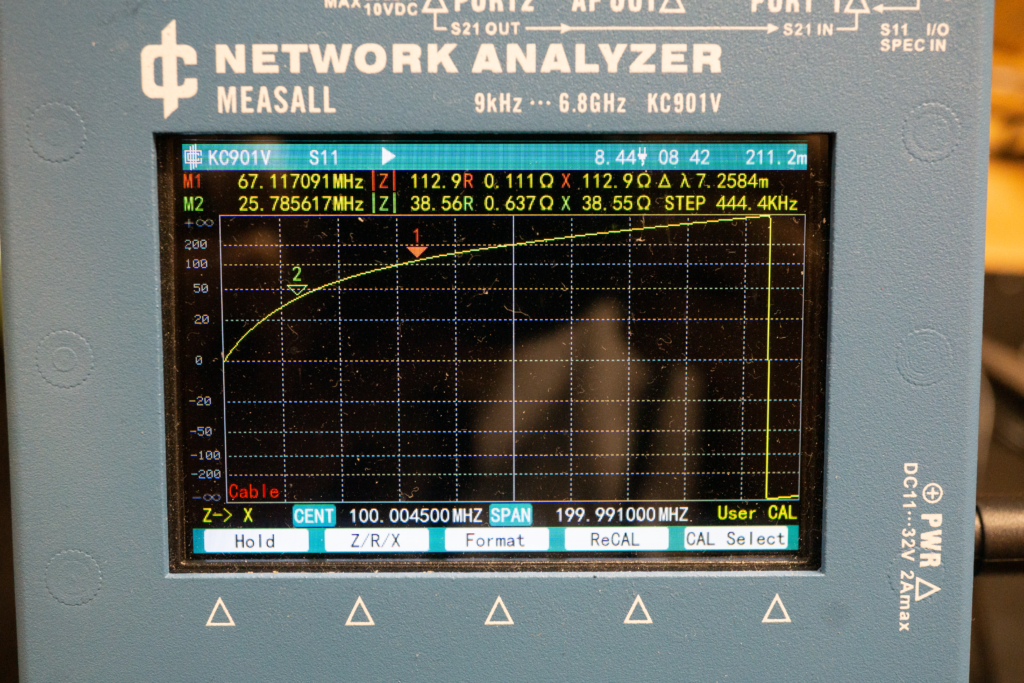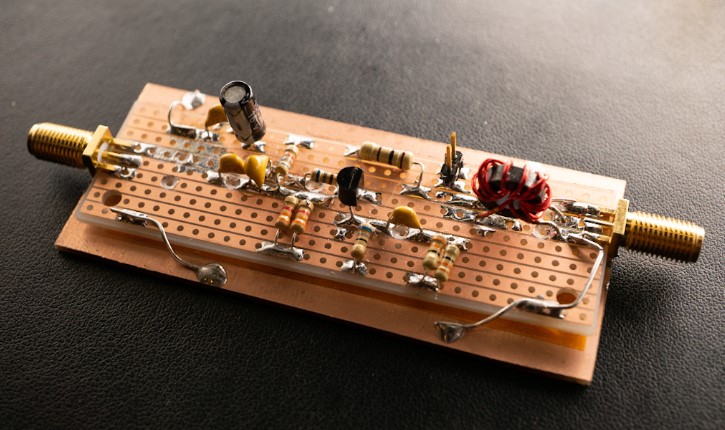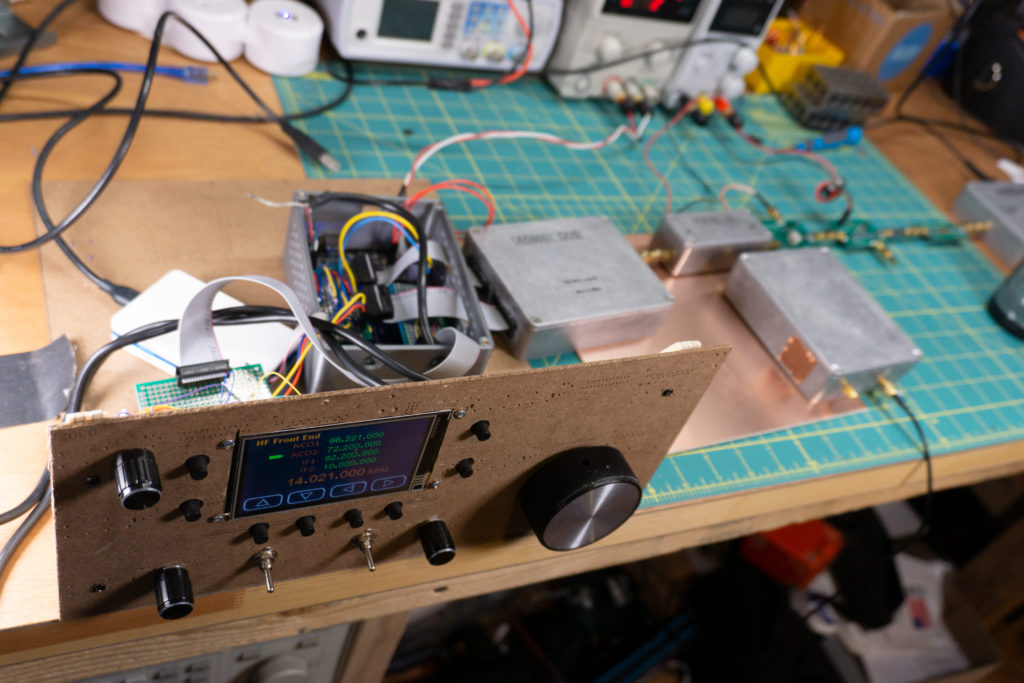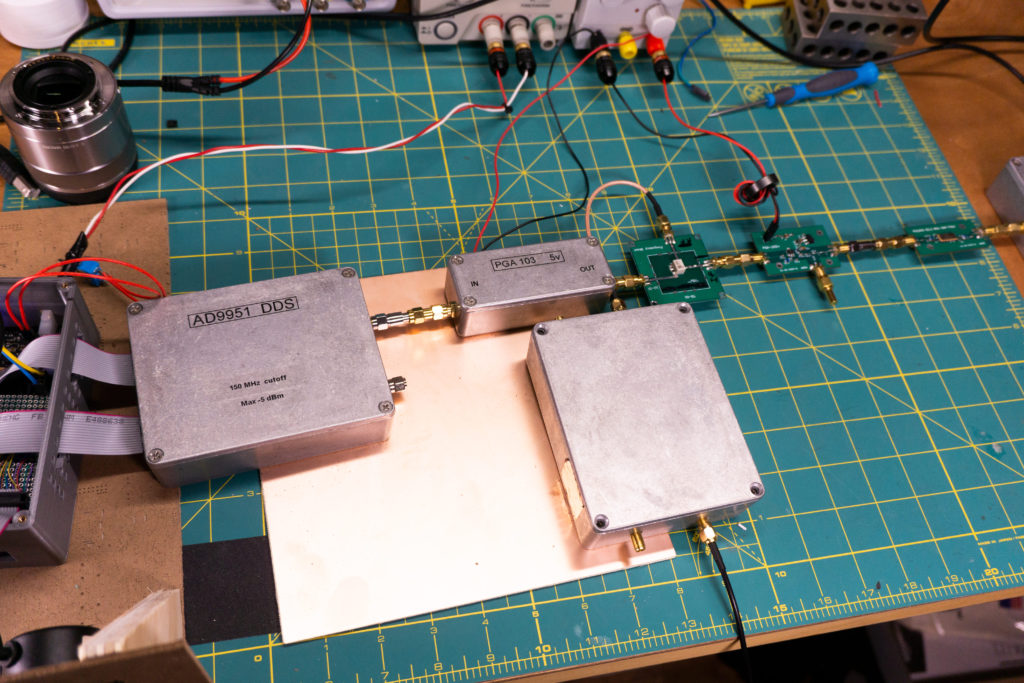
A DDS module I designed and built as a low phase noise RF source for my projects. For my dual conversion receiver I wanted sources with as little phase noise as possible. These AD9951 DDS chips are really nice. I’m clocking the chip with a 400 MHz LVPECL clock, which has reasonably small phase noise but I do think it sets the ultimate noise floor. (I don’t have anything to measure the module to make sure.)
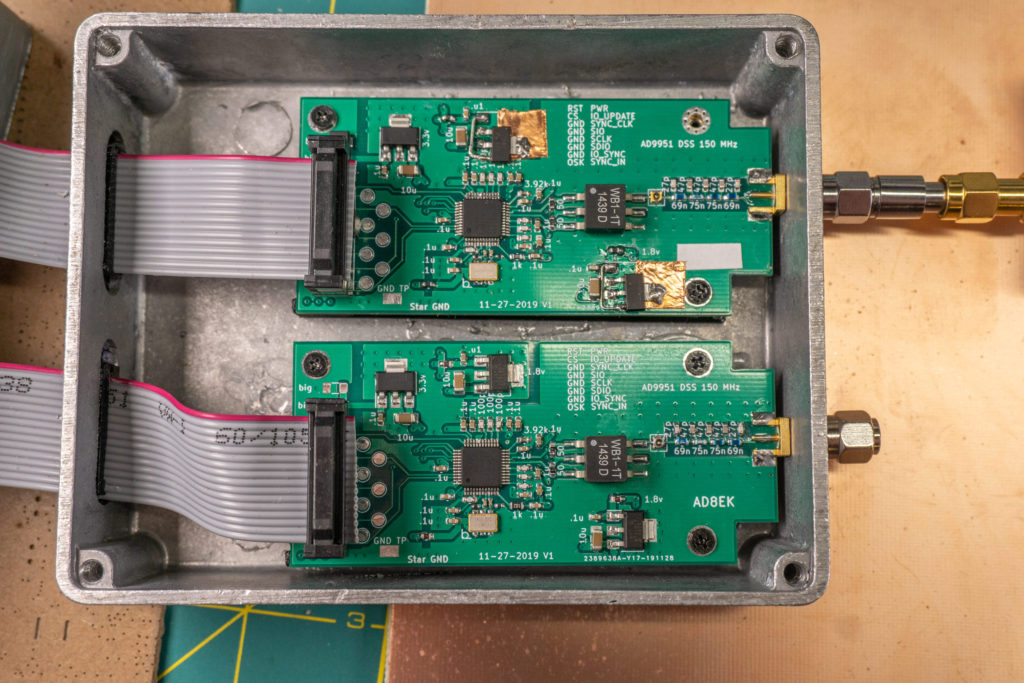
I stuck two of the modules inside an aluminum box I bought off of Amazon, and I control the modules using an SPI port from my processor. The processor is an Atmel SAMS70 (an m7 mobile ARM processor), which is on a board my dad and I have been working on. There would be no problem using Arduino to do the same thing; in fact, I believe there are a couple Arduino libraries out there.
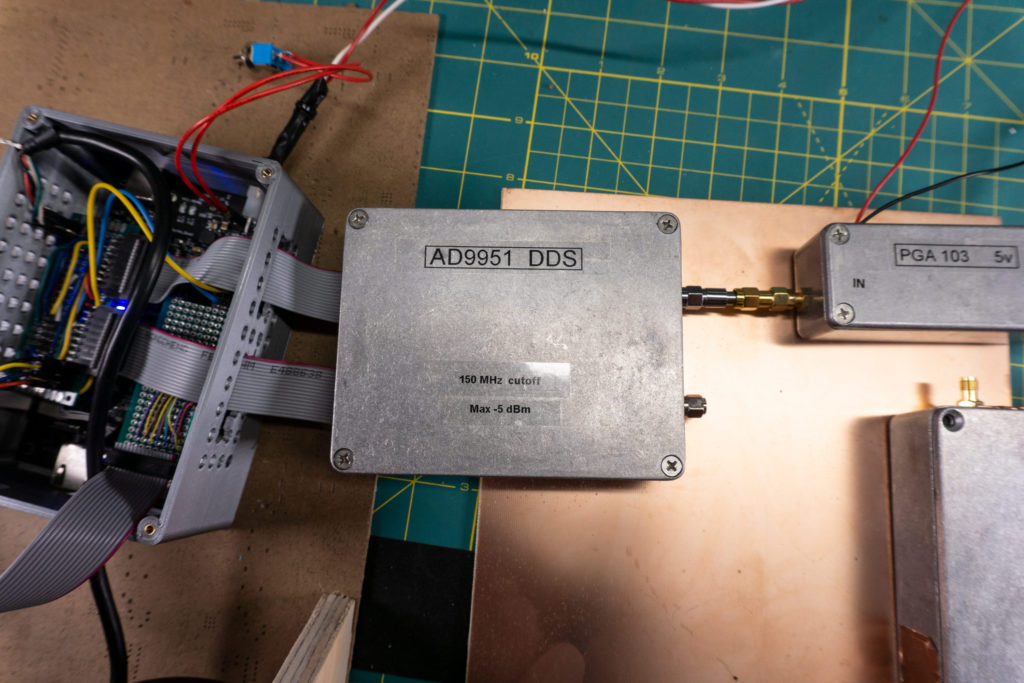
In the picture above you can see the box containing the microcontroller on the left and on the right you can see the DDS feeding an amplifier block. Those aluminum boxes are nice for RF projects.
I’m really happy with how these came out, they work great and are easy to use. They are expensive chips though. I think they were around $30 a peace, so my hand was shaking a little when I soldered them on.
As far as design details go, I mostly used the reference design from the datasheet. The LVPECL clock wasn’t in the datasheet, but the voltage was right for providing a strong clocking source (you just need to make sure you bias them properly). The reconstruction filter at the output is a 9th order Chebychev filter with a cutoff at 160 MHz. I probably could have pushed that up a little higher in frequency, but I really only want to use these modules as high as the 2m band so the 160 MHz cutoff is fine.

